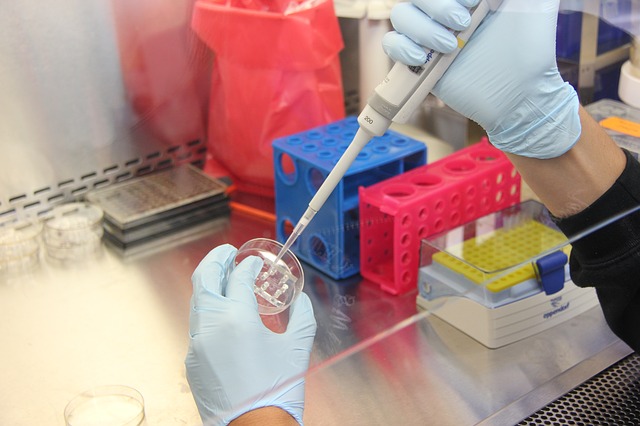New research from Queensland University of Technology shows preventable hospitalization from diabetic foot disease is costing Australia hundreds of millions of dollars each year.
Senior Research Fellow at the Queensland University of Technology and co-chair of Diabetic Foot Australia, Peter Lazzarini, said the importance of early prevention of diabetic foot disease was never more important.

Mr Lazzarini led the Australian-first study published in BMJ Open finding one in every 22 patients in our hospitals have active diabetic foot disease.
“Our study, which investigated a representative sample of hospitalised patients in five hospitals across metropolitan and regional Queensland, found 4.6% of all patients had active diabetic foot disease and nearly half of those were in hospital because of their diabetic foot disease.
“This equates to 27,600 hospitalisations each year caused by diabetic foot disease in Australia, which puts diabetic foot disease easily in the top 20 causes of hospitalisation in Australia.”
Continue Reading Below ↓↓↓
He said this amounted to an annual direct cost to Australia for hospitalisation alone of $350 million.
“This figure is much higher than we previously thought and is still very much a conservative estimate, because this cost only relates to patients admitted because of their diabetic foot disease in public hospitals,” he said.
Mr Lazzarini said diabetic foot disease didn’t stop with hospitalisation and that it also causes 4,400 amputations and nearly 1,700 deaths in Australia each year.
“If diabetic foot disease is left untreated it can quite easily result in hospitalisation, amputation and even death,” he said.
“Unfortunately, we also found that people hospitalised because of diabetic foot disease had rarely received the recommended multi-disciplinary foot care needed to properly treat their disease in the year prior to their hospitalisation. This seems to confirm our thoughts that people with diabetic foot disease that do not see a multi-disciplinary foot disease team are more likely to end up in hospital.”
However, Mr Lazzarini offers a message of hope: early prevention.
“We know from our previous research in Australia that when people with diabetic foot disease receive this recommended multi-disciplinary foot care we can prevent around half of the hospitalisations, amputations and costs that would have occurred without this care. Diabetic foot disease is a readily preventable disease if diagnosed and treated early.”
Mr Lazzarini, and a national expert team from Diabetic Foot Australia, are advocating for a national multi-disciplinary approach this National Diabetes Week to help end avoidable hospitalisation and amputation from diabetic foot disease.
“Our study, and similar research from Europe and the US, firstly recommends everyone with diabetes presenting to a hospital needs to have their feet screened for diabetic foot disease. This would help identify nearly everyone who presents to an Australian hospital that needs treatment for this disease but doesn’t necessarily know it.
“Secondly, everyone who is found to have diabetic foot disease needs to be seen by a multi-disciplinary foot disease team both in and out of hospital. In the UK they are up in arms that 20% of their hospitals do not have these teams. We estimate only 20% of our hospitals in Australia actually have these teams and this needs to significantly improve.
Continue Reading Below ↓↓↓
“Thirdly, people with diabetes need to see their GP or podiatrist at least every year for a foot screen. Unfortunately, people with diabetes can lose feeling in their feet and left unchecked diabetic foot disease can develop in the form of sores, infections and poor circulation. We know that about 50 per cent of the over one million Australians with diabetes have a foot screen each year. This means we don’t know if diabetic foot disease has affected the other 50 per cent and sometimes it’s too late when we do. If we can pick up diabetic foot disease early and refer people to these multi-disciplinary foot teams we can prevent thousands of hospitalisations, amputations and even deaths.
“We know these simple preventative measures can save our hospital system millions and millions of dollars each year, but most importantly, change the lives of thousands of Australians with diabetes by empowering them to keep both their feet firmly on the ground and out of hospital.”
Diabetic Glenn Wilson from Albany Creek knows only too well the value of early intervention.
Having lost every toe on his left foot and one on his right some years ago, Mr Wilson is keen to raise awareness of the need for diabetics to keep their diabetes under control.
“You have to be on your toes to keep your toes,” he said.
“You can only keep your diabetes under control if you are having regular check-ups with your GP and your podiatrist, self-check for any injuries or abnormalities, a feeling of heat in the foot which can indicate infection even though you might not be able to see it, and check your blood sugar levels daily.
“All this information wasn’t available when I first had diabetes but people now have the knowledge and knowledge is power.”
Mr Wilson said people needed to be aware of the need to act quickly when they spotted a problem.
“When I saw an infection on my foot a while ago and couldn’t get an appointment with my GP I came to the QUT Podiatry Clinic and was able to have a script prepared so I could receive the antibiotics I needed,” he said.
Mr Wilson said the cost to the health system was really just a fraction of the overall cost to society.
“There are so many things that people take for granted that I can no longer do. For example, walking on the beach and being able to feel sand between your toes, hiking in nature, riding a bike. I can’t even ride an exercise bike because I have no feeling in either foot,” he said.
More information:Diabetic Foot Australia
Source: Queensland University of Technology
Journal: BMJ Open












